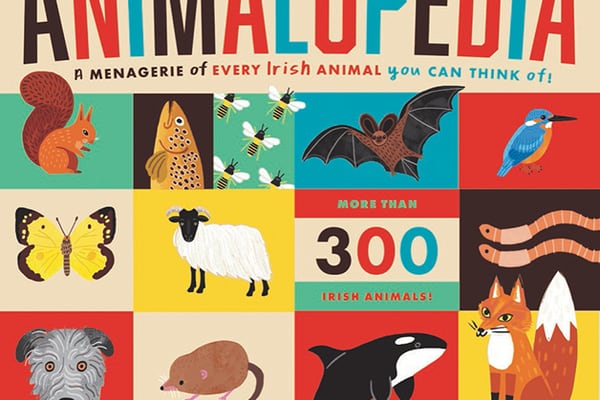Malachi O’Doherty and Brendan O’Leary both expect referendums on Irish unification: for O’Leary around 2030; for O’Doherty perhaps somewhat later. If correct, policymakers and voters on both sides of the border must prepare for far-reaching decisions. Each author has written a thoughtful and thought-provoking contribution to that process of preparation.
Those committed to keeping Northern Ireland in the UK can simply oppose unification. Participation in discussions about a united Ireland could legitimise an outcome to which they are fundamentally opposed. In an interview with O’Doherty, Doug Beattie, leader of the Ulster Unionist Party, asked, “Why would I give you the solutions to the problems that you have? Why would I design something for you when I don’t want it?”
O’Doherty’s primary purpose, as I read his book, is to counter a naive belief that there already exists a coherent Irish people, such that Ireland ‘being one’ should follow as a matter of course
Those open to or in favour of unification, in contrast, must engage with the different but complementary issues explored by O’Doherty and O’Leary.
O’Doherty’s primary purpose, as I read his book, is to counter a naive belief that there already exists a coherent Irish people, such that Ireland “being one” should follow as a matter of course. Criticising this viewpoint, O’Doherty contemplates the variety of Irish identities, drawing on both his own experience and conversations with many others from across the island.
READ MORE
He is particularly scathing of the discussion at an event organised by Ireland’s Future, an advocacy group for the possibility and viability of new constitutional arrangements on the island of Ireland. The floor and panel speakers were, in his view, not alert to the nuances of the Northern Irish experience, making “glaringly superficial and trite comments”.
O’Doherty vividly highlights a contradiction within Irish nationalism. The 1937 Constitution invoked an all-island Irish people, defined by their Gaelic culture, their struggle against British rule, and their Christian – perhaps specifically Roman Catholic – faith.
This constitutional invocation only worked because the part of the island actually controlled by the State was inhabited by people who could broadly be characterised in those terms. The Constitution challenged the legitimacy of partition; but partition underpinned the legitimacy of the State.
The constitutional amendments approved by referendum after the Belfast Agreement provide an alternative vision of “all the people who share the territory of the island of Ireland, in all the diversity of their identities and traditions”. But some advocates of Irish unity, while respecting this diversity in principle, can too easily downplay fundamental differences of identity and outlook.
Well-intentioned conversations about unification will be lacking when others – for legitimate reasons – do not wish to participate. But it is the responsibility of advocates for Irish unity to engage with the reality of unionist sentiments rather than construct more sympathetic simulacra.
Range of identities
O’Doherty’s book – through memoir, anecdote and interview – convincingly brings out the range of identities across the island. He highlights the diversity, both currently and historically, within those who might be classed as unionists, nationalists, or “others”. Any process of unification must grapple with these complexities.
O’Leary’s book more convincingly analyses the mechanics of unification and the range of issues that would need to be addressed. He builds on his own extensive prior research and the research of others to present the first comprehensive manual of Irish unification.
Having reviewed other instances of unification and experiences of constitutional change on the island of Ireland, O’Leary addresses how unification could happen, potential models of a united Ireland and processes for getting there, government of a united Ireland, economics of unification, policing and security issues, and accommodation of diversity.
Those who are undecided will want to know what unification might involve. O’Doherty, for instance, says he will defer his decision until he has read all the terms and conditions
O’Leary accepts his book will not cause anyone opposed to unification to change their minds. But his book will appeal to a wide range of readers.
Those who are undecided will want to know what unification might involve. O’Doherty, for instance, says he will defer his decision until he has read all the terms and conditions, refusing to be bound by a cultural legacy that opposes the border. Even those committed to unification on identity grounds – an entirely legitimate position – should question how unification might work, and how it might work better.
O’Leary’s book will be mandatory reading for the public servants who must prepare for any votes on unification. O’Leary and O’Doherty agree that preparation for a united Ireland is essential. The Brexit model of vote first and ask questions later risks a majority that supports the principle of unification alongside different majorities opposing every possible form that unification could take.

Podcast: Brendan O'Leary talks about his book Making Sense of a United Ireland
Among the issues to be addressed are questions of identity (flags, anthems, languages, Commonwealth membership); governmental structure (whether to continue devolution in Northern Ireland); protection for minorities; structure of social services (health, education, social welfare); policing and military structures; sovereignty transfer issues (Northern Ireland’s share of the UK’s assets and liabilities, location of sea borders and fishery zones); fiscal issues; the integration of two legal systems.
Simple majority
Referendums would be required north and south of the border to authorise unification. The threshold for passing is a simple majority of 50 per cent plus one. Anything else would breach the Belfast Agreement and inappropriately privilege the option of Northern Ireland remaining part of the United Kingdom. O’Doherty and O’Leary agree on these points, which should be beyond argument in public debate.
The referendums must be concurrent, but need not be simultaneous. O’Leary recommends that the referendum south of the border should only be held after a referendum in the North approves unification. He questions why, if the Northern referendum fails, the South should be put through unnecessary transformations.
But O’Leary reveals the benefits of simultaneity when he asks why, if the Northern referendum is not expected to pass, the Southern public would engage fully with the issues at stake.
Under the Belfast Agreement, a referendum in the North must be held if it appears likely to the secretary of state that a majority of those voting would support unification. This criterion, if applied in good faith, almost guarantees that any majority for unification would be narrow. Faced with polls suggesting only a slim majority in the North for unification, many voters in the South might well avoid engagement in the issues until after the referendum in the North.
By this point, however, it would be too late to have any input into the proposed terms of unification because – on account of the concurrence requirement – voters North and South must vote on substantively the same proposal. The terms of unification must be fixed before the referendum in the North.
Simultaneous referendums make it more likely for southern voters to engage with the seriousness of the choice when it is still possible to shape that choice. Moreover, simultaneity would help create a shared public space for deliberation, enhancing the democratic legitimacy of any unified state that emerged.
The Belfast Agreement allows the secretary of state to call a unification referendum at any point, provided none has been held in the previous seven years. If an unwarranted referendum were called, perhaps to demonstrate that there was no possible majority for unification – possibilities canvassed by O’Doherty and O’Leary – the Irish Government would be justified in not holding a referendum.
But it seems most unlikely – after the Scottish independence referendum of 2014 – that a secretary of state would risk this stratagem. A referendum could be lost, would be unlikely to take the constitutional issue off the political agenda, and would make it more difficult to refuse a further Scottish referendum. There are many reasons to prepare for possible referendums on unification, but this is not one of them.
Detailed blueprint?
The currently most pressing issue is whether the form of a united Ireland should be determined before the referendums. Should voters be presented with a reasonably detailed blueprint of a united Ireland? Or should they instead vote on the principle of unification, leaving the design work – including a constitutional convention – until after unification?
O’Leary labels these the “model approach” and the “process approach” respectively. The choice between them will determine the structure and pace of preparatory works. Until that choice is made, it is difficult to plan comprehensive preparations.
O’Doherty suggests that the model approach is unavailable. Even if unification referendums were passed on both sides of the border, he writes, there would then have to be an all-Ireland referendum on changes to the Constitution. The two-step process would create a risk of unification referendums being passed but constitutional amendments rejected.
This analysis is incorrect and the problem avoidable. The unification referendum in the South could both endorse unification and provisionally authorise constitutional amendments that would come into effect if voters in the North also supported unification. Northern voters would formally vote on the principle of unification, but with knowledge of how the Constitution would be amended if unification were approved.
How, then, should we choose between the model and process approaches?
For O’Leary, the principal benefit of the process approach is that, because the crucial design decisions will be made after unification takes place, they will be all-Ireland decisions reached when unionists have full incentives to participate.
As we saw from O’Doherty’s interview with Beattie, unionists have strong reasons not to discuss a united Ireland for as long as maintaining the union is still possible. The democratic credentials of any unified state would be enhanced, O’Leary suggests, if all sections of the community were involved in its design – something which is unlikely to occur under the model approach.
The principal benefit of the model approach, in contrast, is that voters would know what they were voting for. The model of a united Ireland would be reasonably clear before the referendums, so voters could make an informed choice, enhancing the democratic legitimacy of that choice. Under the process approach, in contrast, voters’ choice would be less informed because the design work would be postponed until after the referendums.
Tipping the balance
The model and process approaches give effect to democratic values in two different ways – clarity of choice versus inclusiveness of design – making it difficult to choose between them. O’Leary identifies an important aspect of the process approach, however, which in my view tips the balance in favour of the model approach.
Under the process approach, what form would a united Ireland take while the process of design was under way? If the design process failed – either because of lack of agreement or because proposals were voted down at referendum – what form would a united Ireland take then? The only solution is to have a model of a united Ireland that would apply provisionally until the design process is completed and then in default if the design process fails.
This introduces three problems. First, less public and official attention might be paid to the formation, analysis, and critique of the provisional/default model because the intention is to design a different model shortly after unification. Second, the clarity of voter choice would be undermined because voters would have to be told that a united Ireland could end up either with the provisional/default model or with some other model yet to be designed. Third, if the provisional/default model ultimately pertains, there would have been minimal unionist involvement in its design, negating the principal benefit of the process approach.
For all these reasons, I suggest that voters at any unification referendum should be presented with a model of a united Ireland, worked out to the maximal extent possible. It is the responsibility of the Irish government to prepare that model, through a process of research, consultation and consensus-building.
It would be a gross abdication of political responsibility for the Irish Government not to have prepared a model of a united Ireland that convincingly addressed issues of identity, constitutional structure, social and economic policy and public administration
This process will likely unsettle unionists and may make resolution of current issues around the protocol even more difficult. Nonetheless, unification would be the biggest question facing Ireland in over 100 years. Respecting understandable sensitivities should not prejudice planning for the future.
Evolution in public opinion as interpreted by the secretary of state for Northern Ireland – not any decision by the Irish Government – will determine when referendums are held. It would be a gross abdication of political responsibility for the Irish Government not to have prepared a model of a united Ireland that convincingly addressed issues of identity, constitutional structure, social and economic policy and public administration.
One hundred years after partition, people on the island of Ireland may soon face fundamental questions of territory, identity, and constitutional government. These two books provide invaluable insights into the choices and challenges that lie ahead.
Oran Doyle is a professor at Trinity College Dublin and Academia Sinica Taiwan.














